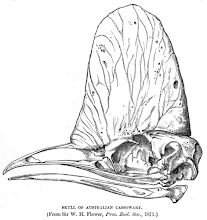well, I'll tell you what, I went to Les Grands Tetons avec my family and friend for vacation last week.

and i'll tell you what else, it was beyond beautiful.

[follow standard magic eye procedure and you'll see me. i'm on the right!]
i was really frustrated at first when we got there, because the birds were not iowa natives. i could not recognize hardly any of them! it was so annoying to see this guy:

and not have a clue as to who he was! i felt like such an ornithological fraud. don't worry, i didn't go into a state of depressed self re-evaluation wherein i decided to completely give up birding.
i just got a book for species ID!

turns out that black and white dude is a magpie. the bird on the front of the book is a male western tanager, which i saw flitting around camp more than once. his colors are so wild!

also at camp was a fellow birder! she works for hawkwatch,and it was great to hang around and geek out about birds with her. she had a sibley guide, which made me jealous. naturally, i had to get one so i didn't have to keep coveting hers! [and one about behavior. thanks mom and dad!]

my dad totally got mad at me for my instant gratification reflex. i blame society and say it's a symptom of not only me but my whole generation to want things RIGHT NOW. so gimme dat book!
i figure it is now up to me to:
a) wolf down the information in these books as fast as i can and then
b) relay it back in fun and easily digestible blog-o-form to you, the reader!
weird, it's kind of like when a mother bird regurgitates food into her young's gullets. happy analogy! but kinda gross!
while i was perusing these new books of mine for information about grouse mating rituals, i stumbled upon these guys:
.jpg)
jacanas! not grouse, but not bad! they're in a family known as jacanidae, and in the same order as killdeer [charadriformes].
the family is comprised of six species, all of which are characterized by what first caught my eye: the foot morphology.

jacanas, being shorebirds, have "amazingly long toes" adapted for smooth commute on top of floating vegetation.
holy phalanges, that thing can walk on lily pads!
my favorite, aesthetically speaking, is the comb crested jacana. also known as lilytrotters, comb crested jacanas are cool because they have those weird bright red combs on their foreheads; it's almost as if walking on water hyacinth wasn't impressive enough.

one might think: well, the comb must be for the males to attract the ladies. TyPiCaL~*
and one would be right! kind of!
BUT jacanas are an interesting set of birds: they are polyandrous.

as you may have guessed from the above stock photo, polyandrous implies "a lot of guys serving one girl." but i can break it down even further for you with my rudimentary understanding of greek! as i understand it, polygamy is multiple partners; polygyny multiple females to one male.
poly = many
gamy = any reproductively active bits
andry = male reproductively active bits
gyny = female reproductively active bits
polyandry, then, must be the opposite of polygyny!
with jacanas, the females mate with a male, lay the eggs, and leave the male to take care of the fertilized eggs. the female then mates with a different male and pulls the same stunt: she lays and leaves. no time for actually tending to the young--leave that to the male.

hey honey, can you take care of the nest? i'm going to be late tonight.
see yuhh
jacana females are, on average, much larger than the males, and seem to be the dominant [in the territorial sense] sex. according to the PBS online library, the reason behind the jacana's polyandry may be due to the high amount of egg predation the species of the jacanidae family has historically experienced. due to predatory conditions, if the females lay more eggs, the species has a higher survival rate. jacana females have evolved to become "egg laying machines"

and i mean, let's be honest, those eggs look SWEET. i would totally prey on those babies. [pun fully intended]


No comments:
Post a Comment